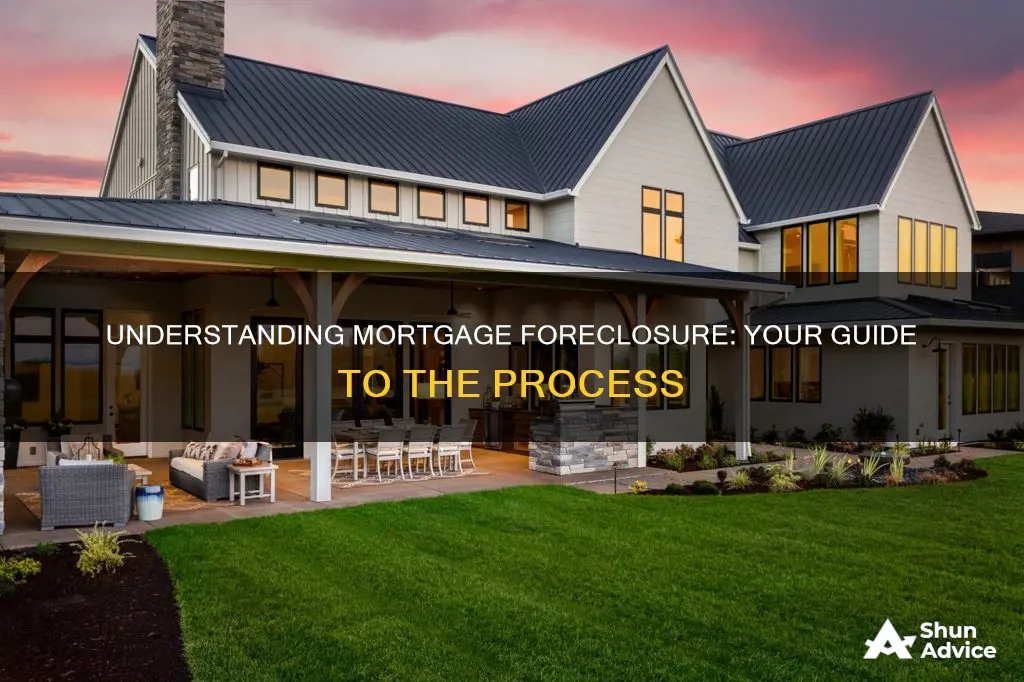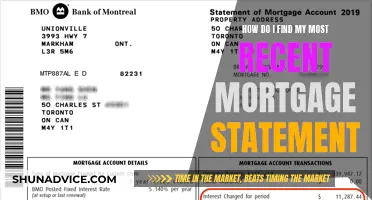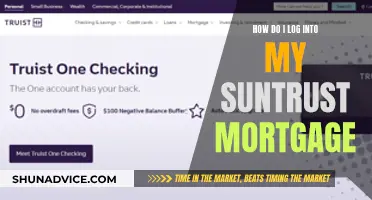
Foreclosure is a legal process that allows a lender to take control of a property that is in arrears. It is typically the result of a borrower defaulting on their mortgage payments and can have serious consequences for the borrower's credit score and ability to purchase or rent a home in the future. The process of foreclosure has several steps, from the first missed payment to eviction, and can vary depending on the state and the type of foreclosure, which can be judicial or non-judicial. Understanding the process and knowing your rights as a borrower are crucial when facing foreclosure.
How do I foreclose on a mortgage?
| Characteristics | Values |
|---|---|
| Definition | Foreclosure is a legal process by which a lender seizes and sells a home or property after a borrower is unable to meet their repayment obligation. |
| Initiation | The process is initiated when a borrower defaults on their mortgage payments. |
| Notice of Default | After a certain number of missed payments, the lender sends a notice of default. |
| Judicial vs. Non-Judicial Foreclosure | There are two types of foreclosure: judicial foreclosure, which requires the lender to file a lawsuit in court, and non-judicial foreclosure, which does not require court involvement and is typically faster and less expensive. |
| Grace Period | Lenders often offer a grace period of up to 15 days after the due date for the borrower to make their payment without incurring late fees. |
| Loan Modification | Lenders are often willing to work with borrowers and may offer solutions like loan modifications to help them become current on their payments. |
| Redemption | In some states, borrowers have a right of redemption, allowing them to get back foreclosed property by paying the unpaid balance or the auction price, depending on the situation. |
| Eviction | The final phase of foreclosure is the eviction of the occupants from the property. |
| Credit Score Impact | A foreclosure can negatively impact a borrower's credit score and their ability to obtain future loans or housing. |
What You'll Learn

The foreclosure process
Foreclosure is a legal process that a mortgage lender uses to take control of a property whose borrower has missed a certain number of payments. The process can be lengthy, leading to months or years of financial and emotional stress. It can also damage the borrower's credit score and result in the loss of property.
After three to six months of missed mortgage payments, the lender will file a Notice of Default with the local recorder’s office and send one to the borrower via certified mail. Depending on the state, the lender might also post the notice on the borrower's front door. This notice specifies how much the borrower owes to bring their mortgage back into good standing.
After the fourth missed payment, the lender's attorneys may move forward with a foreclosure sale. The borrower will receive a notice of the sale in accordance with state and local laws. The amount of time between receiving the notice of the trustee's sale and the actual sale will depend on state laws.
Depending on the state, the foreclosure process can be judicial or non-judicial. In a judicial foreclosure, the lender files a lawsuit to initiate foreclosure, and the borrower goes to court to fight the lawsuit. If the borrower loses, the house will go into foreclosure and can be sold at auction. Judicial foreclosures are usually more time-consuming and costly than non-judicial foreclosures.
Finding Non-Recourse Mortgages: What You Need to Know
You may want to see also

Judicial vs non-judicial foreclosure
Foreclosure is a legal process that occurs when a borrower misses a certain number of payments. The lender moves forward with taking ownership of the home to recoup the money lent. The exact foreclosure process is different depending on the state. Generally, the process begins with the borrower defaulting on their mortgage payments and ends with their eviction from the property.
Judicial vs. Non-Judicial Foreclosure
In a judicial foreclosure, the lender goes to court to get a judgment to foreclose on the property. The foreclosure process takes place in court and may take close to a year or even longer. The lender will bring a lawsuit in court, and a judge will review the evidence submitted by both sides. They may hold a hearing to decide whether the homeowner is in default on the loan. The homeowner can try to reach a settlement with the lender before the hearing to prevent the foreclosure. If the parties cannot reach a settlement, and the court finds in favor of the lender, the court will enter a judgment of foreclosure.
On the other hand, a non-judicial foreclosure means that the lender does not need to go to court. The foreclosure process takes place outside of court and may take only a month or two. A trustee typically handles a non-judicial foreclosure. The lender designates the trustee in the deed of trust that the borrower signs when buying the home. The non-judicial foreclosure process is generally quicker and less expensive for the lender. However, the process can vary widely from state to state.
Finding Your NatWest Mortgage Account Number: A Guide
You may want to see also

How to avoid foreclosure
Foreclosure is a legal process that occurs when a borrower misses a certain number of payments. The lender moves forward with taking ownership of the home to recoup the money lent. This can be avoided by taking the following steps:
Contact your lender
As soon as you know that you are going to have trouble paying your mortgage, contact your lender immediately and let them know you are having financial difficulties. This gives your lender time to work with you to create a financial plan. Lenders are usually willing to work with borrowers to receive some type of monthly payment and may modify your monthly payments to make them more affordable.
Seek help
Do not stop paying your bills. Seek help from government programs and housing counselors early on to learn about your options as you work to keep your home. The Federal Housing Administration (FHA), which is a part of the U.S. Department of Housing and Urban Development (HUD), offers a number of loss mitigation programs and informational resources to assist homeowners facing financial hardship or unemployment.
Understand your loan documents
Find your loan documents and read them so you know what your lender may do if you can't make your payments. Learn about the foreclosure laws and timeframes in your state as the procedure is subject to different laws in each state.
Opt for deed-in-lieu of foreclosure
You could potentially avoid the foreclosure process by opting for deed-in-lieu of foreclosure. In this scenario, you would relinquish ownership of your home to your lender and might be able to avoid responsibility for the remainder of the mortgage and the consequences that come with foreclosure.
Making Home Affordable (MHA) Program
The MHA Program is a broad strategy to help homeowners avoid foreclosure, stabilize the country's housing market, and improve the economy. Homeowners can lower their monthly mortgage payments and get into more stable loans at lower rates.
Who Owns Your Mortgage? Trace Your Mortgage Backers
You may want to see also

Foreclosure lawsuit
Foreclosure is a legal process that allows lenders to take ownership of a property when the borrower falls behind on mortgage payments. The process varies depending on the state and can be either judicial (requiring court approval) or non-judicial (allowing lenders to proceed without a lawsuit).
Judicial Foreclosure
In a judicial foreclosure, the lender must file a foreclosure lawsuit in court. The homeowner will receive a summons and complaint at the outset of the lawsuit and should respond within the deadline provided. The lender must first send a notice of default to the homeowner, letting them know how much time they have to cure the default and reinstate their loan. This is called the reinstatement period and typically lasts 30–90 days. If the homeowner does not resolve the default within this period, the lender can proceed with the foreclosure lawsuit. The homeowner has the right to respond and fight the foreclosure in court. If the homeowner does not respond, the judge will likely grant the lender a default judgment. If the homeowner responds, the case could go to trial or the judge could file a motion of summary judgment if the lender does not feel that the homeowner has a strong defence. A motion for summary judgment is a decision made by the judge when there isn't a genuine dispute about the material facts surrounding the foreclosure.
Non-Judicial Foreclosure
Non-judicial foreclosure, also called power of sale, does not require the lender to file a formal lawsuit and does not go through the court system unless the homeowner sues the lender to stop the proceeding. In this case, the homeowner has the burden of proof and must show that the lender failed to follow the mortgage terms or the law in their state, infringing on their rights. The goal of a lawsuit against a non-judicial foreclosure is to get the court to issue an injunction against the foreclosure, pausing the process until the judge rules on whether the homeowner has a valid defence or whether the foreclosure should move forward.
Who Owns Your Mortgage Now? Find Out
You may want to see also

Eviction
Foreclosure is a legal process that occurs when a borrower misses a certain number of payments. The lender moves forward with taking ownership of a home to recoup the money lent. The exact foreclosure process is different depending on the state. However, there are six typical phases: payment default, notice of default, notice of trustee's sale, trustee's sale, REO, and eviction.
If you bought a residential property at a foreclosure sale, you need to determine whether the person on the property is the former owner or a tenant of the former owner. This distinction is important because it determines the eviction process you can or must use.
If the property is occupied by a tenant who was renting from the former owner, there are special rules that apply. You should refer to the laws in your state regarding tenant's rights and duties after foreclosure.
If the property is occupied by the former owner, you must use the "'formal' eviction process". The "'summary' eviction process" cannot be used to evict a former owner after a foreclosure. Before you can file a "formal" eviction case, you must first serve the former owner with a Three-Day Notice to Quit Following Foreclosure. If the former owner does not move within the three-day notice period (excluding weekends and holidays), you can serve them with a Summons and Complaint for Unlawful Detainer.
If the dwelling unit is foreclosed upon and there is a tenant in the unit on the date of the foreclosure sale, the successor in interest who acquires the dwelling unit must provide written notice to the tenant, notifying them that the rental agreement is terminated and that they must vacate the dwelling unit on a date not less than 90 days after the date of such written notice.
In Virginia, an amendment to the Virginia Code specific to post-foreclosure eviction cases initiated in a general district court has been made to bring more clarity to these types of cases.
Understanding Your Mortgage Grace Period: What You Need to Know
You may want to see also
Frequently asked questions
Foreclosure is a legal process by which a lender seizes and sells a home or property after a borrower is unable to meet their repayment obligation.
The foreclosure process typically involves six steps: payment default, notice of default, notice of trustee's sale, trustee's sale, REO, and eviction.
There are two types of foreclosure: judicial foreclosure and non-judicial foreclosure. Judicial foreclosure requires a lender to file a lawsuit in court, while non-judicial foreclosure does not.
There are several ways to avoid foreclosure, including reinstatement, forbearance, and negotiating with your lender. It is important to take action as soon as possible and to be aware of your legal rights and options.







